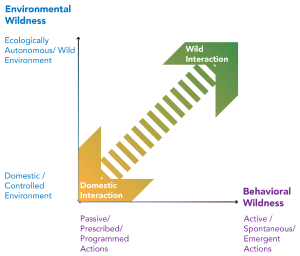Human–Nature Interaction Pattern Design in Landscape Architecture
Citation
Li, H., & Kahn Jr, P. H. (2025). Human–Nature Interaction Pattern Design in Landscape Architecture. Land, 14(10), 2051. doi.org/10.3390/land14102051
Landscape architecture has always cared about beauty, nature, and cultural meaning. Today, more designers are thinking about nature as a system that we interact with over time. But even with these ideas, it’s still hard for designers to understand and plan how people’s physical actions—like touching, walking, or moving through a space—shape their connection with nature.
Some existing approaches, like biophilic design and restorative environments, talk about the benefits of nature. But they don’t always explain how people’s direct, physical experiences in nature help build a sense of connection, well-being, or meaning.
This paper introduces a new idea called Interaction Pattern Design (IPD) to fill that gap. It gives landscape architects a framework to plan outdoor spaces that encourage people to form stronger, more meaningful connections with the natural world.
Abstract

Landscape architecture has long engaged esthetics, ecological process, and cultural meaning, and contemporary practice increasingly embraces systemic and process-based approaches. Yet even within this richness, designers often lack systematic tools for addressing how embodied interaction shapes human–nature relationships. Granted, frameworks such as biophilic design and restorative environments emphasize the importance of contact with nature. Yet they often stop short of specifying the sensory and movement-based interactions through which agency, well-being, and meaning are cultivated. To address this gap, this paper introduces Interaction Pattern Design (IPD) as a theory-grounded and practice-oriented framework for landscape architecture. The first part of the paper outlines what interaction patterns are, how they scale along the continuum from highly domestic to relatively wild environments, and the empirical evidence that establishes their significance. The second half of this paper speaks to designers specifically and applies this IP approach to the design process. Two design tools are introduced. One is Quadrant Mapping, which visualizes intersections of environmental and behavioral wildness within a site. The second is Structuring Interaction Patterns, which organizes design elements through scale, sequence, and co-occurrence. Drawing from case studies, the paper demonstrates how these tools enrich process- and ecology-focused design methods, supporting deeper and more enduring forms of engagement with nature.